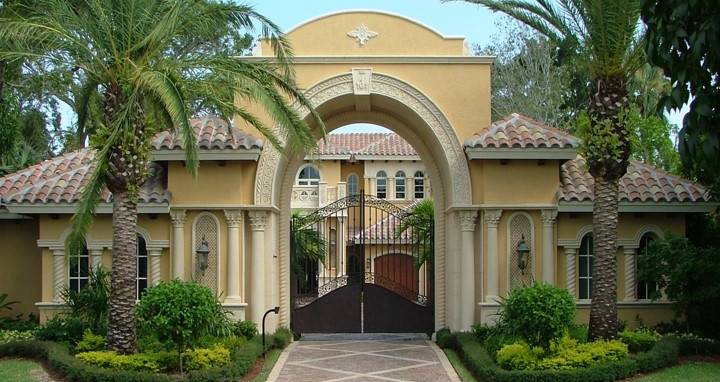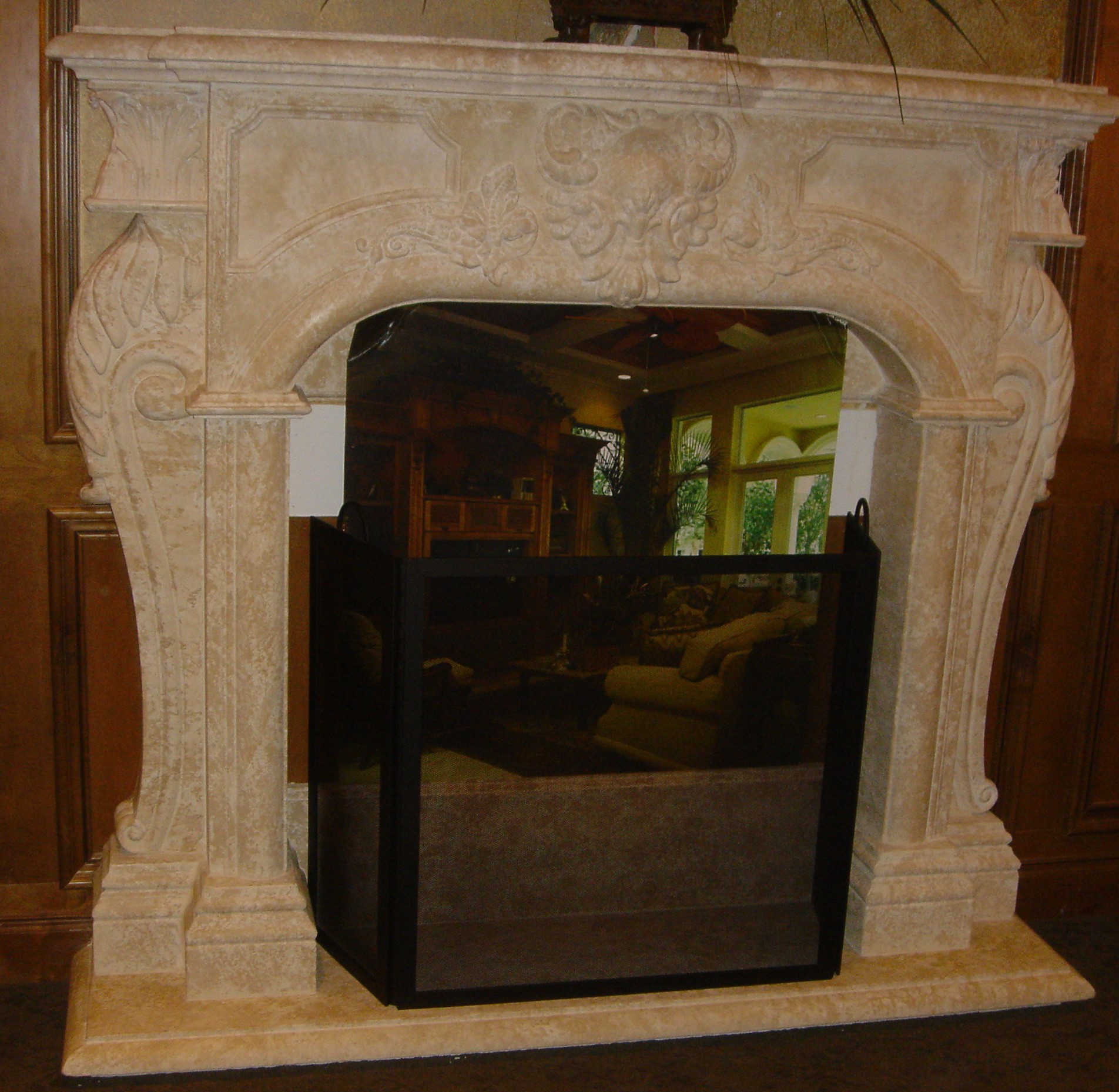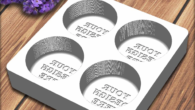
Beginners Guide To Wall Parapet And Pier Caps
A Little History And Overview Of Caps

A beginners guide to wall parapet and pier caps and how ancient civilizations like Egypt and Greece were ahead of their time when it came to architecture. They introduced wall caps not just as functional aspects of construction but as decorative elements too. These early builders used stone and clay to top structures, aiming to protect them from the natural wear and tear caused by harsh weather conditions.
As an Amazon Associate, I earn from qualifying purchases
This post contains affiliate links. If you make a purchase through these links, I may earn a commission at no extra cost to you.
Fast forward to medieval Europe, and the role of caps evolved significantly. Parapets became indispensable in castles and fortified buildings, serving crucial defensive purposes. These structures weren’t just practical. They also reflected the architectural style and the era’s emphasis on fortification and defense.
The Renaissance period brought a shift towards artistry and decoration. Wall caps gained prominence as a symbol of elegance and style, embodying the newfound appreciation for art and beauty in architecture. Builders experimented with intricate designs and materials, setting the stage for the ornate structures we see in period buildings today.
Each period brought a unique perspective to the architectural elements known as wall, parapet, and pier caps. They provided clarity on how these simple yet effective tools have transformed over centuries, balancing function and form in the world of architecture.

Iconic Architectural Examples Across the Globe
American architecture offers some standout examples of walls, parapets, and pier caps. These can be seen in historic buildings, gardens, and public spaces providing both protection and style. Think of some of the old government buildings, where these caps contribute to the grandeur of their designs, enhancing both beauty and durability.
The UK showcases its sturdy yet elegant architectural heritage with stunning examples of caps adorning castles, churches, and stately homes. These structures beautifully illustrate how these caps not only protect but also bring out the charm of historic British architecture, often characterized by intricate detailing and craftsmanship.
Globally, various regions have embraced these architectural elements, weaving them into their cultural narratives. From European elegance to Asian minimalism, wall and pier caps adapt to different styles, showcasing versatility and regional influence. Architects today continue to draw inspiration from these iconic designs, melding tradition with modern innovation to create timeless structures.

Functional Benefits and Aesthetic Value
Wall caps play a crucial role in keeping structures safe from weathering and erosion. By acting as a shield, they extend the life of walls and piers, preventing water ingress and damage. This protective function becomes especially valuable in climates with seasonal variations, where exposure can lead to serious structural issues.
Beyond protection, wall and pier caps add a layer of support that enhances the stability of surrounding structures. Their carefully designed profiles can help balance loads and distribute weight, contributing significantly to the structural integrity, particularly in buildings that involve multiple tiers or levels.
In terms of aesthetics, these architectural elements elevate a building’s visual appeal. They often complete a facade’s look by adding decorative touches, from simple lines to elaborate carvings, that reflect the building’s character and era. By integrating caps into design plans, architects achieve not only a durable solution but an expressive one, offering depth and detail to the structure’s appearance.

Design Variety and Material Selection
Wall caps come in an impressive range of designs, catering to tastes from minimalist to richly ornate. Whether it’s a simple flat top or detailed carvings, the style chosen can drastically alter the overall impact. Architects and designers have a broad spectrum to choose from, allowing for customization that meets both structural needs and aesthetic goals.
The ability to cost-effectively create a custom-shaped pier cap can assist with many ways to accommodate other elements like some form of balustrade system made of any material. Or to create a termination point for other building elements like flashings at roof junctions. Creating custom radius pieces is also a relatively low-cost item, especially with the more basic profiles
Material selection is equally diverse, with options ranging from natural stones like granite and limestone to modern alternatives like precast stone or composite materials. Natural stones offer timeless elegance and durability, ideal for historic restorations where authenticity is key. Meanwhile, manufactured materials provide versatility and cost-effectiveness, often mimicking the appearance of natural stone while offering improved weather resistance.
In A Beginners Guide To Wall Parapet And Pier Caps & Adding Trim
Incorporating linear trim pieces often requires meticulous planning, especially when adjusting underside measurements for seamless integration into the design. This involves assessing the cap’s profile to ensure it fits snugly and effectively within the architectural framework, maintaining both aesthetic harmony and functional integrity.
In many applications, the profile of the pier cap can be extended and continued as the banding on the main walls or as a cap to a lower wainscot or ashlar detail. These details take a little extra thought and planning especially at termination points of these types of details. You can incorporate decorative elements like frieze panels, tailored to complement either classic or contemporary architectural styles. These details can enhance curb appeal, adding unique touches that set each building apart. Planning these features early in the design phase can lead to a cohesive and stunning end result.
Landscaping Applications and Innovations
Wall caps aren’t just limited to structural use—they’ve made their mark in landscaping too. They offer a dual-purpose functionality, providing protection to garden walls while also serving as seating areas or planters. This adaptability makes them a popular choice for outdoor spaces, where both durability and design flexibility are needed.
When it comes to connecting different levels in a landscape, special elements like concaved radius wall caps can play an essential role. They allow for smooth transitions between varying wall heights or angles. Thus contributing to a cohesive design that works well on sloped or uneven terrain.
Integrating wall caps into landscaping designs requires a keen eye for balance and aesthetic flow. Selecting the right style and material involves considering not only the visual harmony but also the functional requirements, such as weather resistance and maintenance needs.
The use of decorative elements like terracotta or stone motifs on caps can further enhance the garden’s theme, tying in with other features like pathways and garden furniture. This can transform an outdoor space into an idyllic, cohesive environment, elevating the overall landscape design.

Considerations for Installation and Maintenance
Achieving precision in the installation of wall and pier caps can make all the difference in their effectiveness and longevity. But proper installation can only be achieved if the alignment of the shell structure is square and within any stated contract tolerances. Trying to install a nice and squarely made pier cap on an out-of-square block pier, just does not work.
With wall caps, there are less critical dimensions required, but a straight wall cap must be on top of a straight block or brick wall below. A secure attachment is vital and by using the correct bedding material this can be achieved. Thus ensuring that the caps provide the necessary protection and support while maintaining their aesthetic appeal. Taking time at this stage saves future headaches and potential repairs.
A key factor in installation is ensuring that the caps are level and properly anchored. This involves accurate measurement and the use of appropriate fixatives that suit both the cap material and the base structure. Besides the bedding and setting material stainless steel dowel pins are a common method of additional fixings. This prevents movement and potential damage over time.
It should be noted that pier and wall caps are at the lower end for installation costs, especially if they are capping lower-level walls or planters. Most installers love this type of product as their normal production rates are easily exceeded. Especially on long straight runs.
Maintenance
Regular maintenance can be essential to preserving the functionality and beauty of some wall caps. Depending on the material, this could involve routine cleaning to remove grime and organic growth, or periodic sealing to protect against moisture infiltration. For natural stones, gentle cleaning agents are advisable to prevent damage. Some people prefer the natural patina that ageing creates and leave it that way unless any necessary repairs become evident.
Inspecting for wear and damage regularly can catch potential problems early, saving on costly repairs. Look for signs of cracking, displacement, or any moisture-related discoloration, addressing these issues promptly to ensure the structure remains sound.
For those considering a DIY approach, familiarizing oneself with the nuances of each material and its specific installation requirements can be crucial. If unsure, consulting with a professional can provide peace of mind and ensure that the caps are installed correctly and effectively. So if you need any help or advice, please get in contact.
Conclusion: Recap and Future Insights
Reflecting on the multifaceted role of wall, parapets, and pier caps reveals their importance beyond mere architectural features. They combine utility with aesthetics, offering protection, support, and beauty to a wide range of structures.
Understandably, these elements have evolved over centuries, serving different functions from ancient times to modern landscaping applications. Material and design innovations continue to advance their application, ensuring these elements remain a staple in both construction and design.
Regular maintenance and informed installation are key to maximizing their benefits, whether in historic buildings or contemporary gardens.
Looking to future posts, there’s a lot more to uncover about the creation of custom manmade caps. Stay tuned for insights into the processes and technologies shaping the next generation of these essential architectural details.
Contact Us
We hope you find the information useful, but if you have any questions or need help, send us a message. You do have to sign in and confirm these days to comply with government rules. Sorry for the inconvenience.
Author Rob










I absolutely love the history behind wall, parapet, and pier caps! It’s fascinating to learn how these structures have evolved over time. I figured out what caps and parapets were, and it’s amazing how they blend functionality with artistry. As an art enthusiast, I find the detailed designs and cultural importance of these architectural aspects truly inspiring!